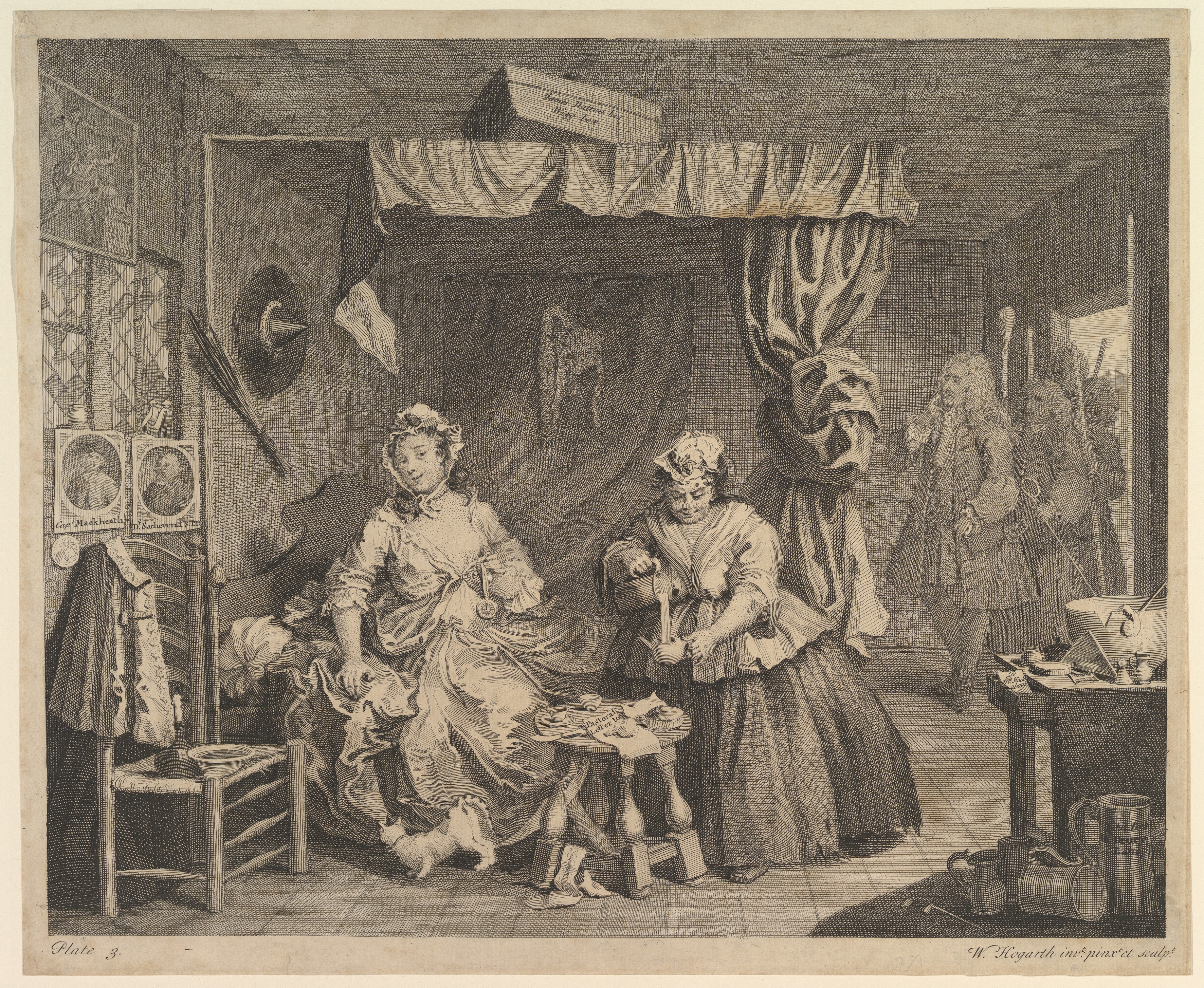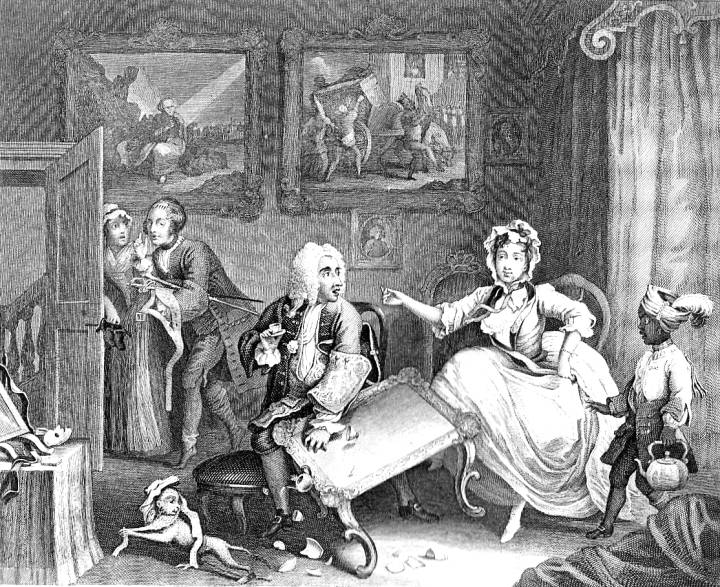

Made 1732 Medium Copperplate Dimensions 32 × 39.2 cm (12 5/8 × 15 7/16 in.) Credit Line Gift of Edison Dick Reference Number 1964.254 IIIF Manifest Dates may be represented as a range that spans decades, centuries, dynasties, or periods and may include qualifiers such as c. Status Currently Off View Department Prints and Drawings Artist William Hogarth Title Plate one, from A Harlot's Progress Place England (Artist's nationality:) Dateĭates are not always precisely known, but the Art Institute strives to present this information as consistently and legibly as possible. The prints on view nearby are early second state impressions, made before the addition of other changes and noticeable wear. The small cross at the bottom of each plate was added when Hogarth issued the second state, released over a decade after the first, much copied edition. He worked in reverse of the final printed images, which were produced by inking the plates and running them through a roller press with dampened sheets of paper on top. I here re-visit Hogarth's early practice of book illustration and house decoration with reference to a canon of pre-1800 Hudibras images, newly enlarged by situating the substantial Littlecote Hudibras mural within this context and its associated visual, literary and book historical traditions.Hogarth engraved these six copper plates (1964.254–59) with a burin, a sharp metal tool used to incise swelling lines directly into a flattened copper surface. This work is heavily indebted to the exemplary scholarship of two landmark publications of 2016, Elizabeth Einberg's authoritative catalogue of Hogarth's paintings (all post-1726) and Peter Black's ground-breaking exploration of Hogarth and house decoration. Archive-based evidence first presented here confirms their dating not to the 1660s but the 1720s and supports Hogarth's presence at Littlecote House around 1724. In this series, we meet the fresh faced Moll Hackabout as she arrives for the first time in London. The first example of these prints, which Hogarth himself termed ‘modern moral subjects’, was A Harlot’s Progress. Local historians attribute the Littlecote murals to unidentified amateur Dutch painters, working in the 1660s (when Hudibras was first published). William Hogarth, A Harlot’s Progress, plate 1, 1732, etching with engraving on paper, 31.4 x 38 cm. Butler's book-length poem is exceptionally significant: book-historically for its key role in copyright legislation and eighteenth-century British book illustration art-historically for its central role in the early career of Hogarth, who published two sets of engravings illustrating Hudibras in 1726. Within a complex decorative scheme broadly referencing themes of human folly and the cabinet of curiosities, two walls feature floor to ceiling composite murals uniting numerous episodes from the publications most significant for Hogarth's early career as a book illustrator: Cervantes' Don Quixote and its most successful English derivation, Samuel Butler's Hudibras.

Unknown to Hogarth specialists and dismissed by art historians, they are in the painted room at Littlecote House. Astoundingly, no previous research-based study of them exists.
Harlots progress pdf#
End Note.įULL PDF AVAILABLE AT: This article progresses long-term researches on Hogarth and book history, the iconography of the skimmington and transnational receptions of Don Quixote, by introducing a substantial new group of images potentially illuminating Hogarth's lost activities as a young painter, before he turned 30 in 1727. The Graphic Novels 3.0 Graphic Novels 3.1 Criticism of the Neologism 4. In The Modern Sense 2.0 Sequential Art, the Term 2.1 Modern Comics, an Introduction 2.1.1 Manga 2.1.2 Franco-Belgian Comics 2.1.3 American Comics 3. The Inception 1.0 The Need To Tell Stories 1.1 In Early History 1.2 Medieval Make-believe 2. Following is the sequenced outline of this colloquium, yet the subsections can be read on their own, irrespective of the order coherence being subject to the familiarity of the readers with the media of sequential art.


The paper also towards the end opines on the current surge of graphic novels in the popular yet not so mainstream readership, India being the context. It also briefly discusses my understanding of the art form and its parallel evolution over time, in dispersed locations on the face of Earth, sometimes citing a few examples to illustrate the point, and at other times quoting the exemplars of the field to suggest the influence they had on ideas and perceptions of the followers, here mostly being the comic book readers and artists. This colloquium paper is an attempt to reflect my thoughts on stories, and telling thereof using visual sequential art as the media.


 0 kommentar(er)
0 kommentar(er)
